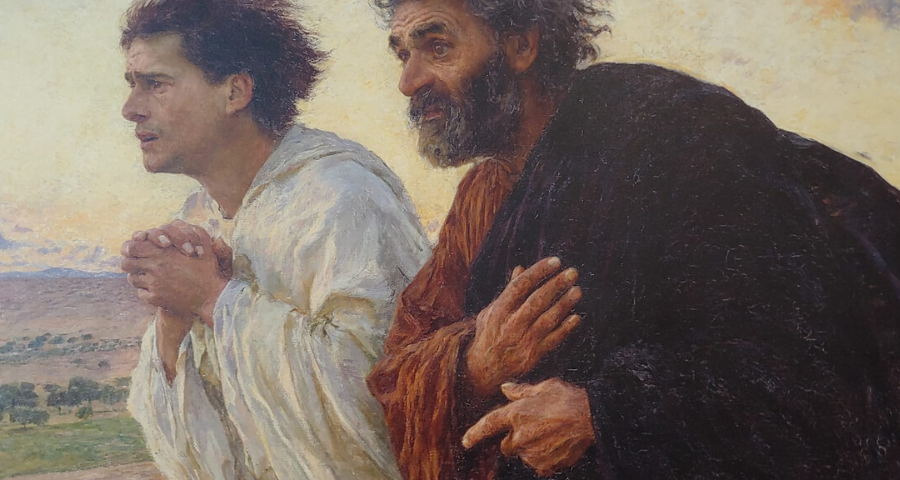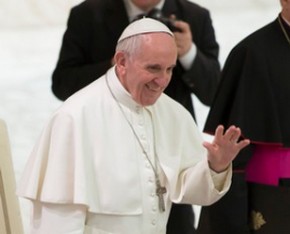Oikonomia/ 4 - The monasteries contributed to inventing another sense of time, reconciling manual labour with the mind
By Luigino Bruni
Published in Avvenire 02/02/2020
"Monasticism carried out a temporal scan of the existence of monks in its cenobies that has perhaps never been equalled by any institution in modern times, not even by the factories of Taylorism"
G. Agamben, Homo sacer
Modern businesses would like to imitate ancient monasteries. But, thank God, they still can't
Monasticism is one of the roots of market economy. By abdicating ordinary economic logic, monks and nuns started a series of evangelical experiments that also generated the European economy. Capitalism was not only generated by monasticism, but would not have been born without it. Long before the Protestant Reformation (Max Weber), monasticism was the first major episode of the "heterogenesis of ends" of modern economy. It was an immense, surprising, wonderful movement. It changed Europe, made it more beautiful and richer, increased its cultural, spiritual, artistic, forestry, enogastronomic biodiversity, and then, almost by mistake, it also contributed to inventing another economy. It should not surprise us, then, that by now so many (for example, Pierre Musso and Isabelle Jonveaux) are claiming that the great enterprises of modern times are the secularization of ancient monasteries. A strong thesis, which will be partly criticized here, but which is still a good starting point. In fact, with the exception of very few (and late) experiences, such as the Venetian Arsenal, the cathedrals or the shops of the great artists / artisans, the medieval bourgeois world did not know the vast, stable and rational productive cooperation of entire communities of men (and women). In some Italian and French regions there were hundreds of monasteries, and in the Middle Ages they lasted an average of five centuries.
Some see a leadership paradigm in the figure of the abbot. In reality, the abbot's "leadership" - an ambiguous word that I don’t have much love for - is mediated, balanced and scaled down by the rule. The rule is the true "leader" of the monastery. Each member of the cenoby follows the rule, including the abbot, who is a model for others in that he is faithful and follows the same rule as everyone else. Unlike the founder of a community, the abbot is therefore a follower (not a leader). The longevity, resilience and sustainability of the monasteries lies precisely in the depersonalization of leadership. The same way that the fragility and short duration of charismatic communities (and businesses) lie in the personalization of the founder, who often become the fundamental basis and spirit of the community. If we picture the spirit of the monastery, it is not the abbot, not even Saint Benedict or Saint Basil, but the rule. So much so that many monasteries were born out of and around a single rule, without having a particular charismatic leader. Leadership based on the rule is as distant as you could possibly imagine from the management of large companies today, even those that claim to be inspired by the rule of Saint Benedict. Then there are other aspects of monasticism, less evident but equally important in relation to the economy and business. First of all regarding work. Ora et labora is the first sentence that comes to mind when thinking about monasticism. Monasteries were introduced from the very beginning as workshops (officina divinae artis). The life of a monk was seen as the learning of an art form, therefore of a profession, a trade, and this is also how it was presented by some ancient founders (Cassiano).
In ancient times slaves were the ones who worked - «Furthermore, all craftsmen exercise a vulgar profession: there is no shadow of nobility in a shop» (Cicero, De Officiis). In monasticism, monks worked too, they were often educated, becoming doctors in theology and other sciences. This alone would be enough to understand what the integration of manual labour with the work of the mind meant for work ethics in general. When a peasant or an illiterate craftsman saw the monks at work, that is, doing the same things they did, they immediately understood that their work was important, it was not merely a matter for servants and slaves. Faith in the Incarnation had taught the monks that touching the matter is not something impure, which therefore only befits a slave. The land, the dust, the food, are a sign and sacrament of life itself. Only those who have used their hands to produce bread and wine know what the Eucharist really is, because they sense that those same goods that change with the effective gestures and words of the priest on the altar, from another true point of view, still remain the same good things born from the vine and the work of man. Without this new ethics of work and matter we would not have had market economy today, and it would not have come about without the monks.
However, it is not easy to understand where the innovation and impact that monasticism had on the world of labour lies exactly. First of all, we need to stop considering the relationship between prayer and work merely as a practical division of time. The monks had to manage the tension between two fundamental biblical words: «Always pray» (Luke 18,1) and «The one who is unwilling to work shall not eat» (2 Thessalonians 3,10). However, they solved it in an absolutely brilliant way. The real anthropological and spiritual stroke of genius of monasticism was to understand and practice prayer and work as moments of the only liturgy of the rule. In a monastery, the time devoted to working does not constitute time taken away from prayer, nor is the time of prayer time taken away from work. We do not pray less because we work, nor do we work less because we pray. To accomplish this very special sort of alchemy, the founders of monasticism did something amazing. While still moving within a quantitative vision of the twelve horae of time, they invented the philosopher's stone of quality-time. While the Horologium of the officium continued to mark the chronology of the day, another clock widened that same time frame until it coincided with infinity. In order to understand it, the rational management of time in monasteries, which seems to have anticipated Smith's "division of labour" and Hayek's "division of knowledge" by many centuries, needs to be read together with its qualitative and liturgical vision, which humanized it while lifting the roof off both libraries and farms. In those small strictly limited spaces fenced by the abbey walls, in that famine of space, the monks invented another sense of time, and learned not to occupy space to activate other (still active) processes. The liturgy of the rule added a dimension to the time of life, and so timeline became a surface.
Thanks to the liturgical vision of time and life, a quantitative part of a day can, qualitatively speaking, become eternity. In fact, the ability to create another sense of time is typical of liturgy: to pierce time-quantity and touch infinity, to enable us to go for a walk, every day, in the gardens of Eden. A great innovation of monasticism was the invention of this other sense of time. An experience that we can all repeat by living for a few days in a monastery: time slows down, becoming denser, and we enter another rhythm of life. Although the lifetime of monks was not, on average, much longer than the lifespan of those who lived outside the monasteries, in reality in monasteries you lived, and still live, much longer and deeper. It is this sort of earthly "eternal life" that has always fascinated and attracted many to monasteries. Such an intoxicating experience that it became the great temptation of monasticism, because sometimes it has lead us to cultivate the desire to be immortal like God (the promise of the snake). If the rule coincides with life and life with the rule, one can become so absorbed in the liturgy that one no longer feels life, and vice versa. It is through this liturgical vision, permitted by the rule, that work and prayer can have the same dignity and not be in conflict with each other. Here work does not need to be spiritualized by praying and reciting psalms or the rosary while working. It is neither necessary nor required: work is an activity of the same value as prayer because it is part of the same liturgy and therefore of the same life, they belong to the same rule.
Hence, this means that work has a value as work, although it is instrumental to life, it has an intrinsic value of its own. This is the paradoxical secularism of the monks. Monasticism knew and knows its crises well, when the hands that harvest wheat and wine were considered less worthy and spiritual than those who said Mass, or when someone (in Cluny) thought that the hours spent saying Mass could replace the ones spent working in the vineyard. But it knows and has known other crises as well, when it attempted to spiritualize work, recommending monks to chant while they were working, and to meditate on the Bible while collecting grapes. These reductionisms diminish the prophecy of monasticism, shorten time, cut its horizons and bring the day back to its 24 hours. Because if I pray while working in the form of prayer, I am taking time away from my day. The prophecy of monasticism was and still is to just work, in its own time and in the form of actual work, and to just pray, in its own time and in the form of prayer; thus each moment serves and regenerates the other, and together they form a great song to the secularism of life, where the sacred is not devoured by the profane, because the profane is also liturgy, and liturgy is nothing but life. In monasteries death is defeated, when, with your feet firmly planted in the mud of the fields, you point at and touch the sky with a finger dirty from work.
It is this qualitative dimension of time that is missing in modern businesses of badges, timing, and bonuses, who would like to control time with increasingly sophisticated horologi, but who do not know the other dimension of time, which when present liberates the workers from incentives and control. A qualitative dimension that is missing because it would undermine the entire structure of companies, which holds up as long as time can be measured and used to incentivize and measure merits. But there is more. If, on the one hand, large modern enterprises are moving away from the humanism of the monasteries, on the other, without knowing it, they are also getting much closer. Unlike the Taylorist factories of the twentieth-century, to which our hands and labour were enough, the enterprises of the 21st century increasingly dream of monk-workers. Management would like workers with a vocation, who freely adhere to the company's mission, who are not guided by external incentives (deemed too weak) but by an inner drive, who do not know the distinction between leisure and work, where work coincides with life itself. Basically they would like monks, who do not work for wages or for profit, but for an intimate sense of loyalty, who in a liturgical vision of life do not stop working even when they sleep, because even sleep is officium. They would like them to be just like the monks described by Augustine: «No one ever works for himself, but all your work tends towards the common good, and with greater commitment and more fervent alacrity than if each and every one just did it for himself" (Regula, 31). But the promise of businesses, unlike that of monasteries, is too small. In order to have monk-workers it would take heaven, another sense of time, other kind of incentives. Businesses don't have them, but they are doing everything to convince us otherwise. Knowing and meditating on the great monastic tradition could become the only true antidote to the false and seductive promises of paradise.
Download pdf article in pdf (355 KB)








